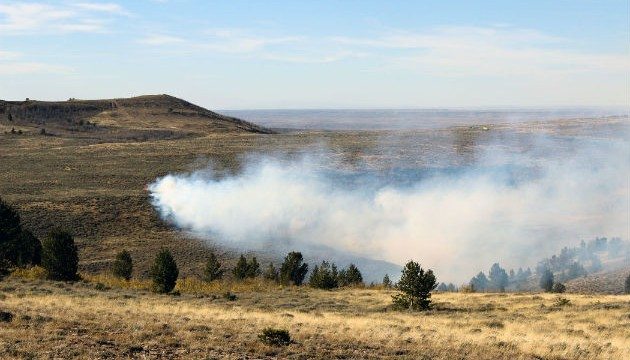
A University of Wyoming researcher recently received an Environmental Protection Agency grant to study black and brown carbon emitted from wildfires, and the effect this carbon has on climate change.
Shane Murphy, a UW assistant professor in the Department of Atmospheric Science, received a three-year, $350,000 grant for a project, titled “Particulate Matter and Related Pollutants in a Changing World,” according to a UW release. The grant project started in February.
“We will be studying emissions from wildfires in the western United States,” Murphy says. “One of the big goals of this project is to determine the importance of brown carbon (from wildfires) and its impact on climate.”
Formed by the incomplete combustion of fossil fuels or biofuels (wildfires), black carbon, or soot, is the strongest light-absorbing component of particulate matter. Black carbon often is coated with brown carbon, which is tar-like material from smoldering fires.
Murphy says one of the big questions that will be studied is whether brown carbon is reacted or evaporated away from a fire.
“There is some evidence that it does, but we don’t know how fast,” he says. “Whether it does is still an open question.”
The EPA grant will fund the salaries of two UW graduate students; all of the field deployment costs to take the department’s mobile lab out into the field; and to analyze results, Murphy says. The mobile lab will travel, this summer and next, to large fires in Wyoming, Colorado, Montana, New Mexico and Utah.
“Obviously, we would like to get substantial fires, not just a couple of trees,” Murphy says. “And we must be able to access them.”
The rest of the year will be spent analyzing the data collected at the summer fires, Murphy says.
During the third year, Murphy and the students will write a final peer-reviewed paper with their findings.
They also will present their findings at the EPA’s annual meeting. Additionally, Murphy says he would like the findings to be published in at least two major science journals.
“I teach a climate class. I’ll talk about the results in that class as well,” he says.


